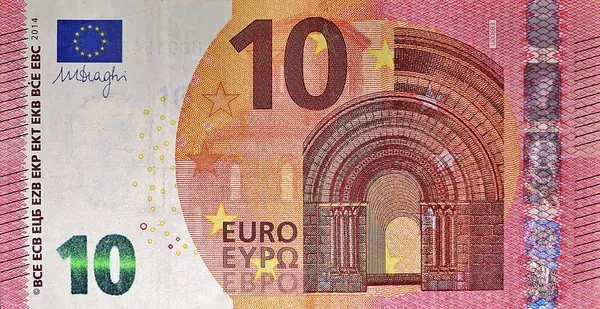The euro, represented by the symbol € and the currency code EUR, is the second-most widely held reserve currency globally and plays a vital role in the European Union’s (EU) economic integration. Launched on January 1, 1999, the euro has become the official currency of 19 of the 27 EU member states, collectively forming the Eurozone. In this article, we will delve into the intricacies of how the euro works, exploring its history, governance, monetary policy, and the impact it has on the economies of the Eurozone countries.
The Euro’s Origins and Adoption
The idea of a single European currency was born out of a desire to foster economic integration and eliminate currency exchange rate fluctuations among European nations. The path to the euro’s creation can be summarized in several key steps:
Maastricht Treaty (1992): The Treaty on European Union, also known as the Maastricht Treaty, laid the groundwork for the Economic and Monetary Union (EMU), which was essential for the introduction of the euro. It established the convergence criteria that member states had to meet to be eligible for adopting the euro.
Euro Introduction (1999): On January 1, 1999, the euro was introduced as an electronic currency for banking and financial transactions. At this stage, euro banknotes and coins were not yet in circulation.
Euro Cash Introduction (2002): Euro banknotes and coins were introduced on January 1, 2002, marking the complete transition to the new currency. Member states phased out their former national currencies.
The Euro’s Governance and Central Institutions
The euro is managed by several central institutions that ensure its stability, integrity, and proper functioning:
European Central Bank (ECB): The ECB, based in Frankfurt, Germany, is responsible for formulating and implementing the euro’s monetary policy. It aims to maintain price stability and keep inflation in check. The ECB also issues euro banknotes and coins and manages the foreign exchange reserves of the Eurozone member states.
Eurosystem: The Eurosystem is the monetary authority of the Eurozone, composed of the ECB and the national central banks of Eurozone member states. It collaboratively manages the euro’s monetary policy and the overall financial stability of the currency.
Eurogroup: The Eurogroup is an informal forum of finance ministers from Eurozone countries. It plays a crucial role in coordinating economic policies and monitoring fiscal discipline among member states.
European Stability Mechanism (ESM): The ESM was established as a permanent financial safety net for Eurozone countries facing financial difficulties. It provides financial assistance through loans and is backed by the member states.
Monetary Policy and Eurozone Economies
The ECB’s primary mandate is to maintain price stability. It does so through the use of monetary policy tools, which include setting interest rates and managing the money supply. The euro’s monetary policy is crucial in influencing the economies of Eurozone countries:
Interest Rates: The ECB sets key interest rates, including the refinancing rate, deposit facility rate, and marginal lending rate. These rates influence borrowing costs for banks, which, in turn, affect the interest rates available to consumers and businesses. Lower interest rates can stimulate economic activity, while higher rates can help control inflation.
Inflation Target: The ECB aims to keep inflation in the Eurozone close to but below 2%. This target is considered ideal for economic stability, as it provides a buffer against deflation while preventing runaway inflation.
Quantitative Easing (QE): During periods of economic stress, the ECB may implement QE programs. QE involves the central bank purchasing financial assets, such as government bonds, to increase the money supply and lower long-term interest rates, thus stimulating economic growth.
Supervision and Regulation: The ECB also plays a role in supervising and regulating financial institutions within the Eurozone to maintain financial stability.
Impact on Eurozone Economies
The euro has several significant impacts on the economies of Eurozone member states:
Price Stability: By maintaining price stability and controlling inflation, the euro fosters an environment of economic predictability and consumer confidence.
Reduced Currency Risk: The euro eliminates exchange rate risk for businesses operating across Eurozone countries. It simplifies cross-border trade and investment by eliminating the need to hedge against currency fluctuations.
Lower Transaction Costs: Businesses and individuals benefit from reduced transaction costs when dealing in a single currency, which enhances the efficiency of financial transactions.
Increased Trade: A common currency facilitates trade among Eurozone member states, leading to increased economic integration and trade flows.
Monetary Union Challenges: The euro also presents challenges, such as the loss of individual monetary policy control for member states. This can make it more challenging to address specific economic issues through interest rate adjustments or currency devaluation.
Economic Divergence: Economic divergence among member states can create difficulties in managing a single currency. Struggling economies may not have the flexibility to devalue their currency to boost exports or stimulate growth.
Challenges and Future of the Euro
The euro has faced challenges and criticisms over the years, particularly during periods of economic crisis, such as the sovereign debt crisis in the early 2010s. Some countries have struggled to meet the fiscal and economic convergence criteria, leading to questions about the sustainability of the currency union.
The future of the euro will likely involve further efforts to strengthen economic governance, improve fiscal coordination, and enhance financial integration among Eurozone countries. Additionally, the euro could play a role in addressing global challenges, such as climate change, by developing sustainable finance strategies and encouraging green investments.
In conclusion, the euro is a complex currency that serves as a cornerstone of the European Union’s economic integration. Its governance, monetary policy, and impact on Eurozone economies make it a unique experiment in international currency cooperation. The euro has weathered numerous challenges since its inception and will continue to evolve as the Eurozone countries work together to ensure its stability and sustainability in an ever-changing economic landscape.


